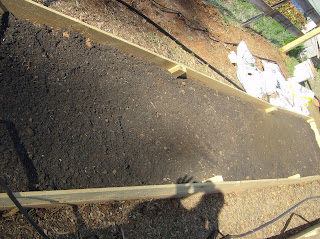Fact #2 I have better things to do than water my plants an hour a day
Logical conclusion: Irrigation system that waters your plants for you evenly and equally everyday
Solution= drip irrigation system
Ok. So I know I said only 400 for the whole garden, but I had to spring for an irrigation system it would have taken me at least an hour to water my garden everyday and with a baby, I cannot promise that kind of free time. I got a small garden drip irrigation kit from irrigation mart for $115.00. I thought set up would be rocket science but after reading the instruction a few time (aren’t you proud) I got it set up. Drip Irrigation is not just about laziness, it is the ideal watering situation and takes less than ½ the water as traditional ‘hose’ method because you loose no water to evaporation. Plants get their nutrients from the water they soak up so inconsistent watering creates less healthy plants. Also watering the roots directly preventing fungus problems that ca develop when water sit on leaves and stems. Drip irrigation (when water is on) drips water through tiny wholes in a plastic flat hose. All this is pressure regulated so you just turn the hose on. The hose (or tape) is buried in the ground to the roots have first access.
Fact#1 Gardens get weeds causing unhealthy plants
Fact #2 I have better things to do then weed everyday
Logical conclusion: no hassle mulch that weeds cannot grow through
Solution=plasticulture
Plasicuture is the ideal mulch. I is cheap, lightweight, and weeds cannot go through it (unlike straw, bark, paper, and other mulches). Garden Plastic is so thin that I can squish enough for my 700 square foot garden in a ball the size of a basketball, and its recyclable.(I go through more plastic from soil and fertilized bags than I do plasticulture) No weeds, Warm soil, and water cannot escape the plastic, so you conserve all moisture. The community Garden I work with doubled their vegetable production with the use of drip tape and plasticulture.
filter and pressure guage

Shut off valves

drip tape connectors

all done



















